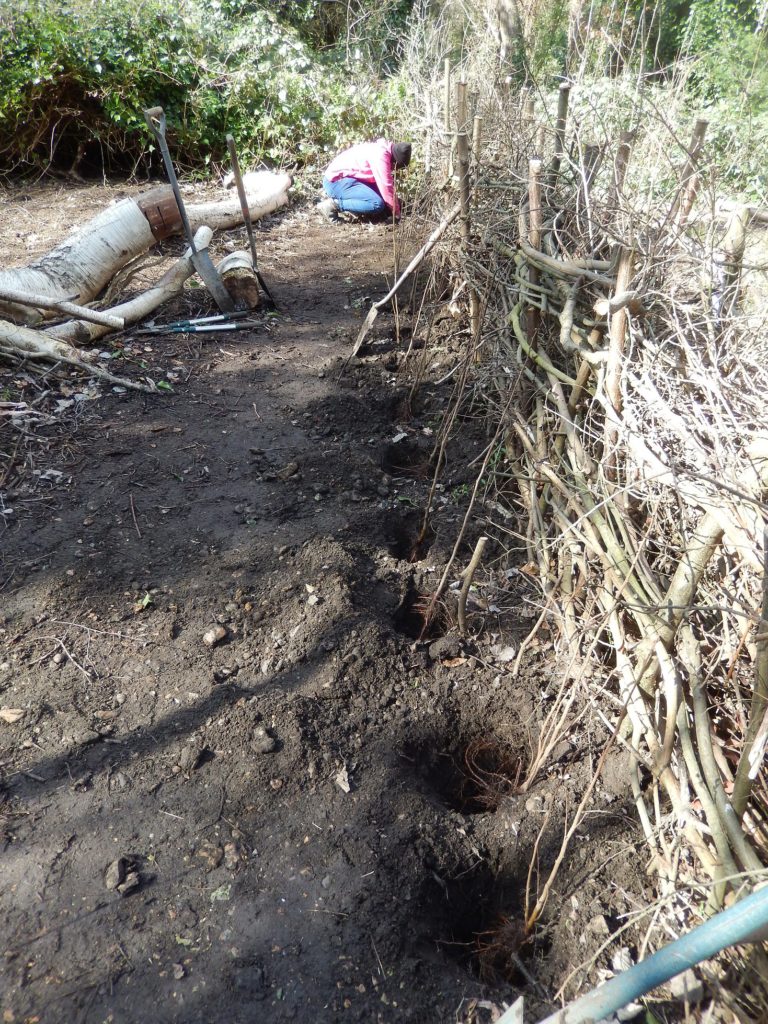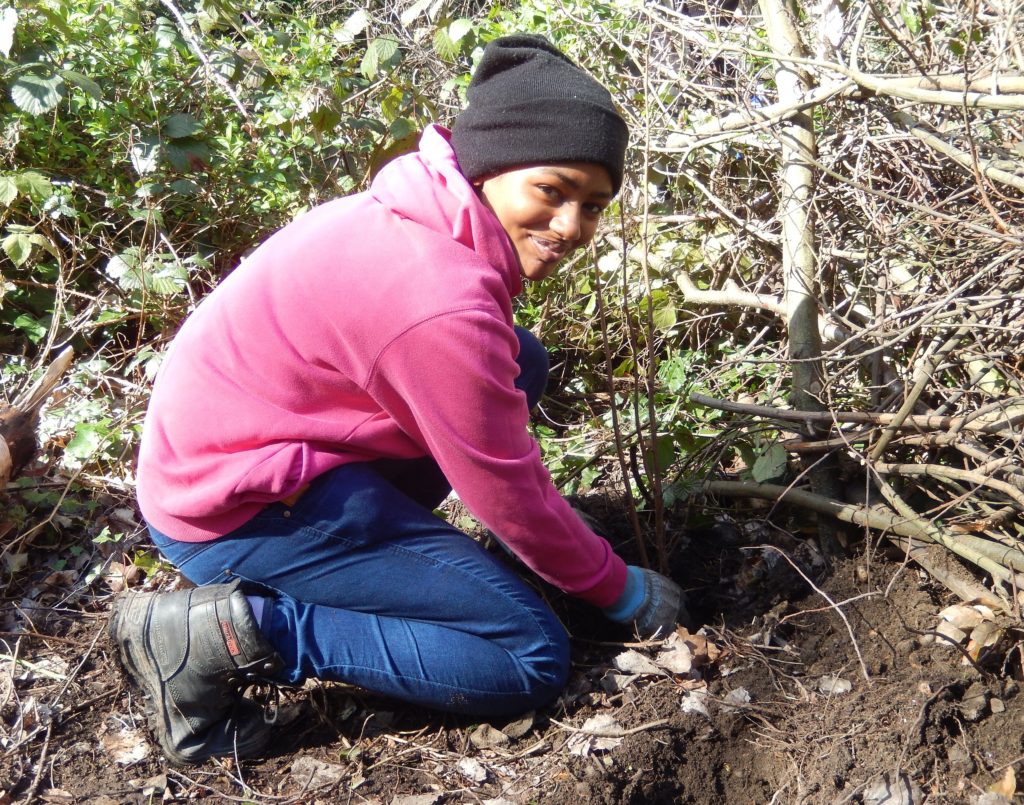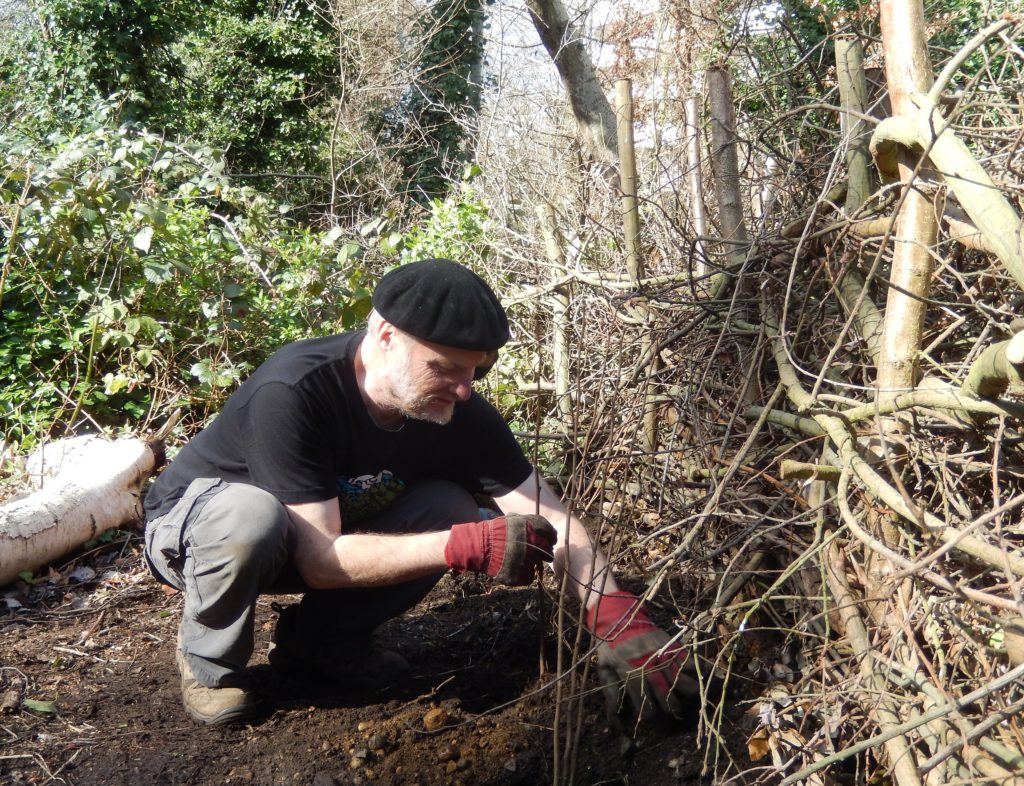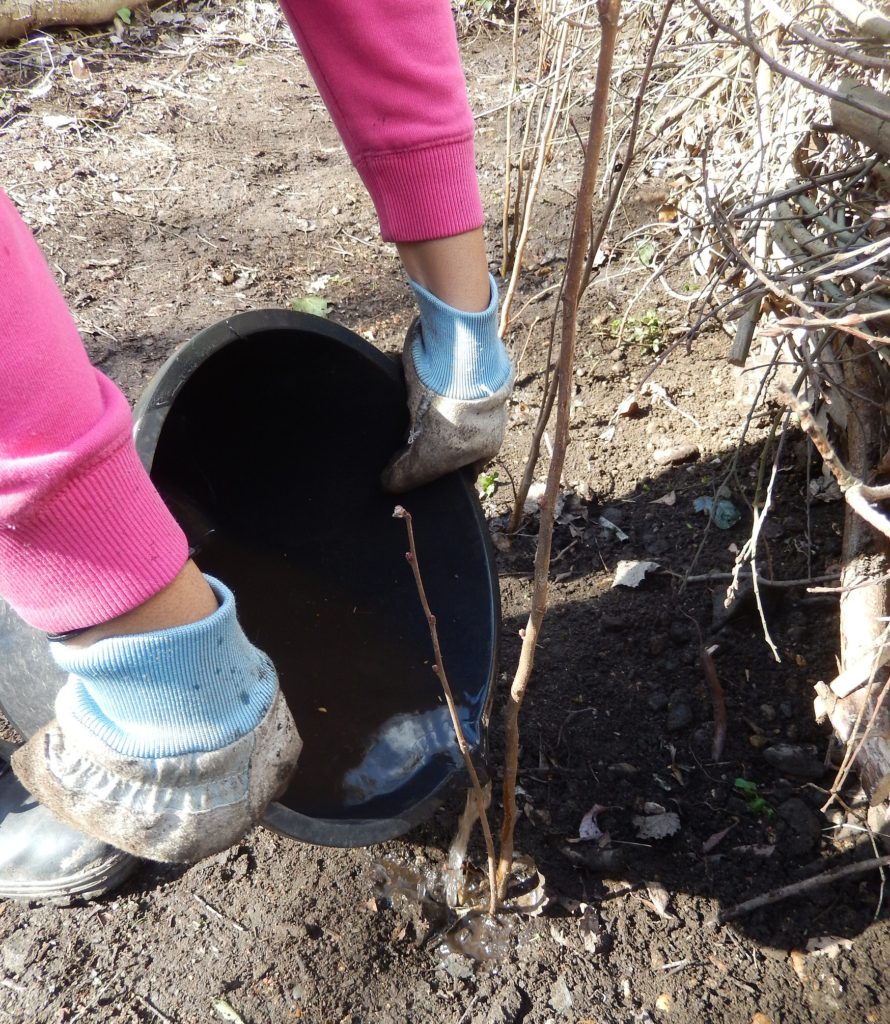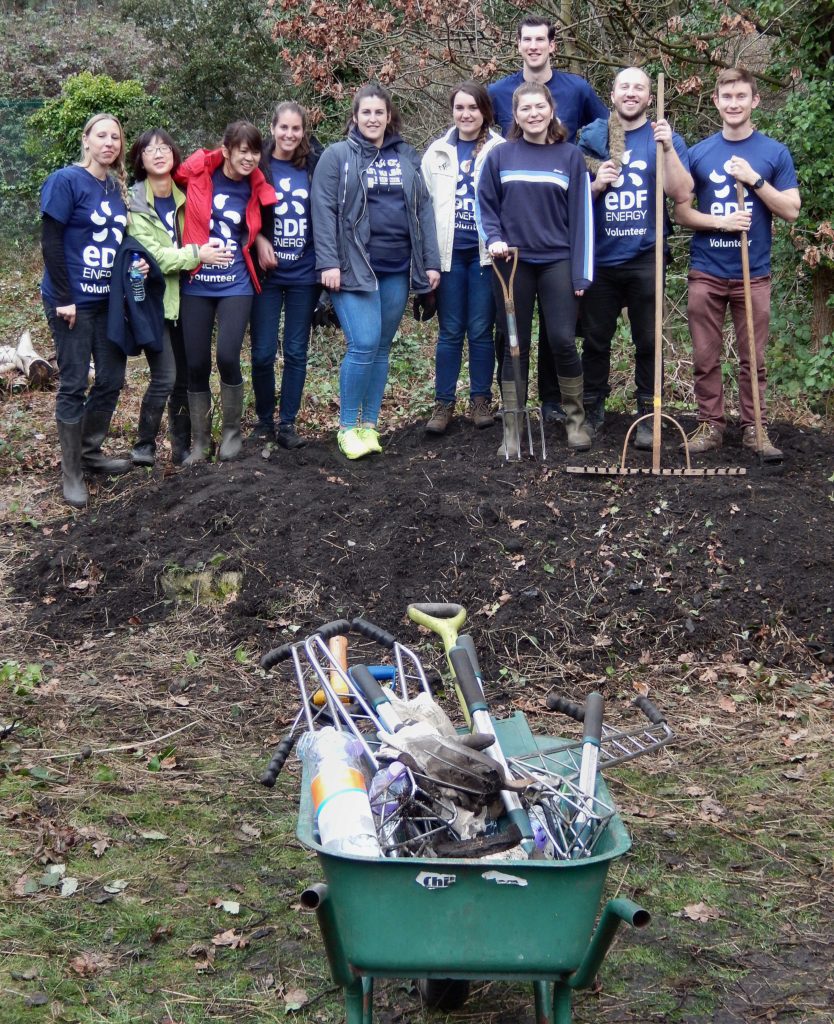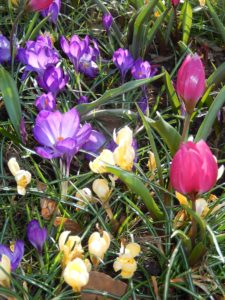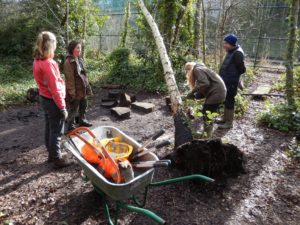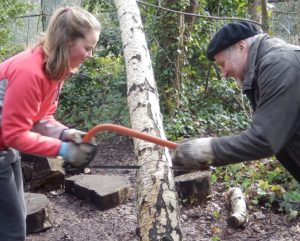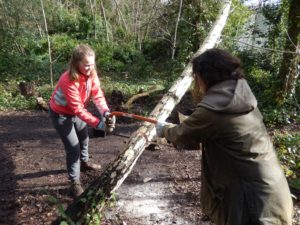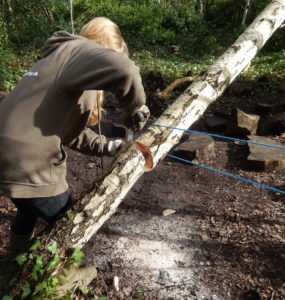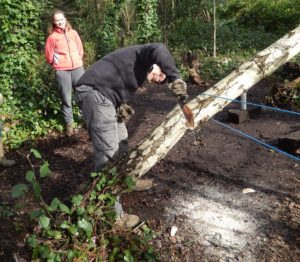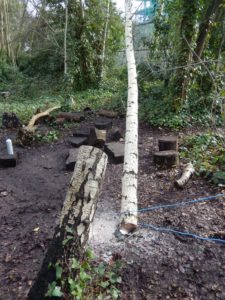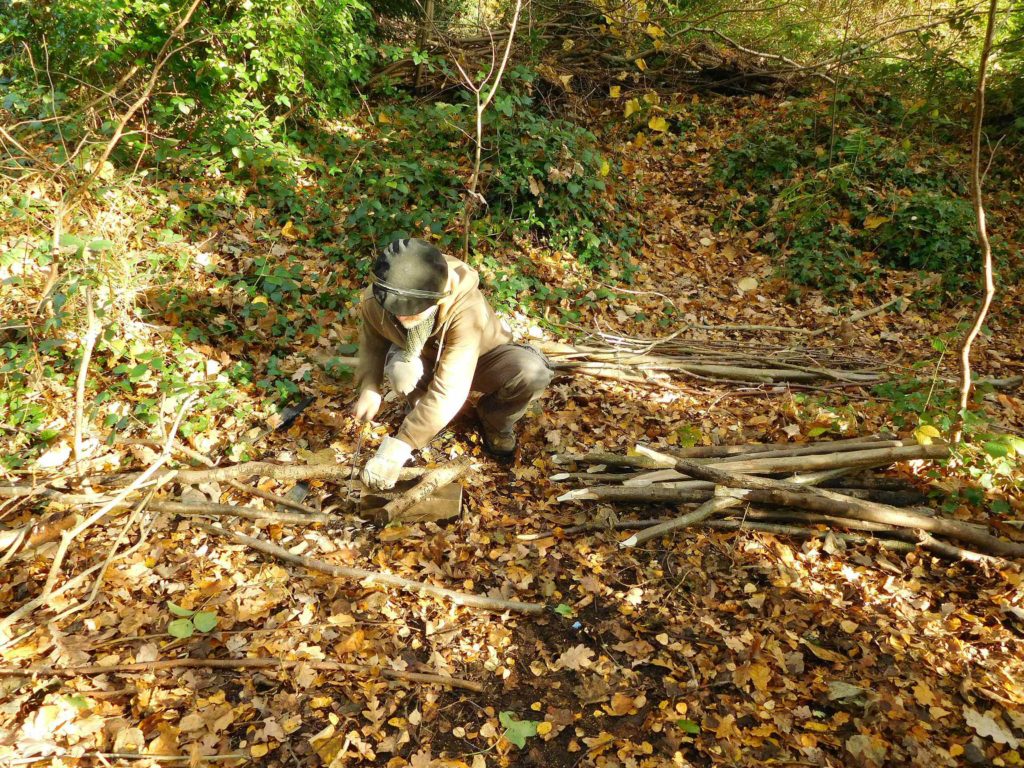
Category Archives: Conservation
Pond-Skimming Reveals Hornwort, Newts, Pondweed, Water Scorpion, Leeches
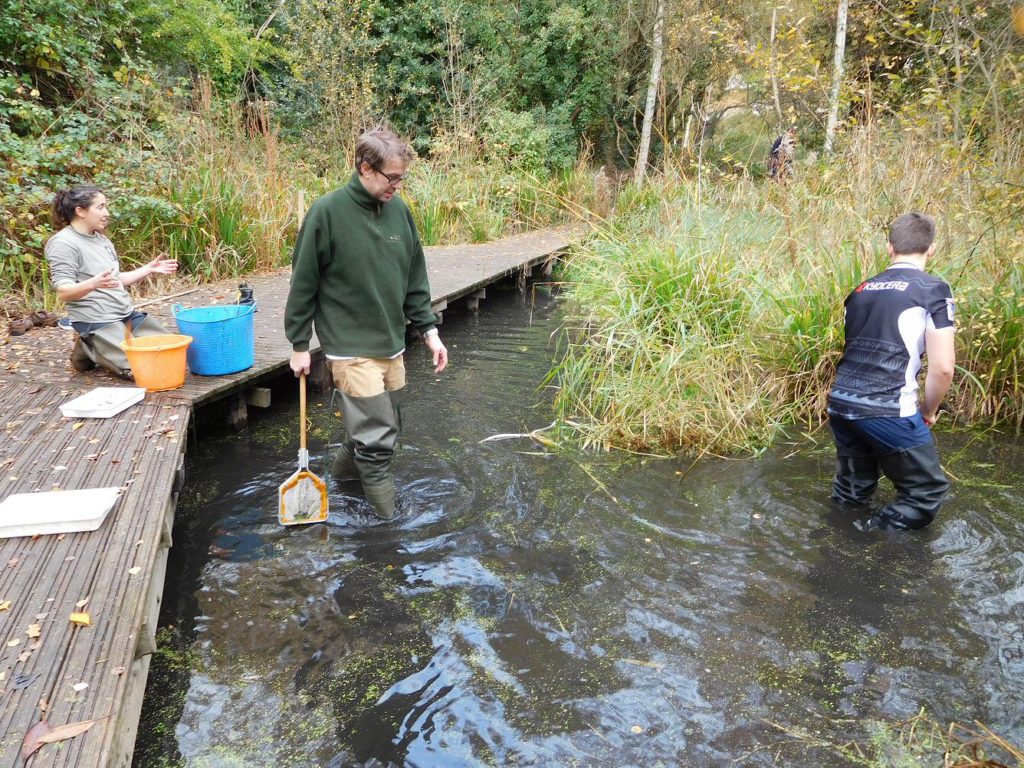
We spent the time skimming off as much of the duckweed that was blanketing the surface of the pond as possible using pole nets. The idea is to let light filter down to the bottom of the pond to encourage the more delicate pondweeds. In the process, we had a good opportunity to check the status of some of the pond life that we don’t usually get to see, as the underwater plants are rather few beside the boardwalk – most likely because the continual sampling keeps them from growing much. But the rest of the pond is another story.
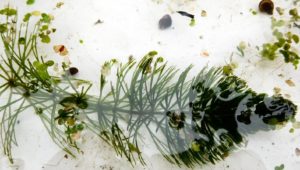
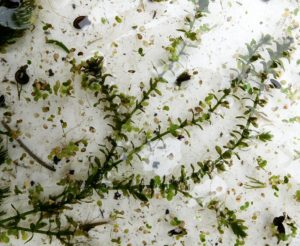
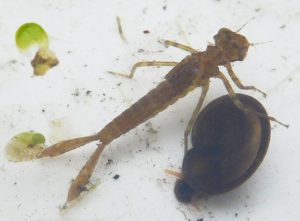
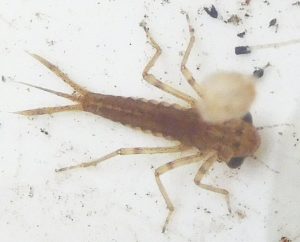
There were at least two kinds of damselfly nymph, possibly bluetail and azure damselflies, judging by a pondside look at the book without a handlens. The little camera in close-up mode is just about capable of resolving detail at this scale, given good light. The various damselfly nymphs have differently-shaped tail appendages, which the book says are diagnostic.
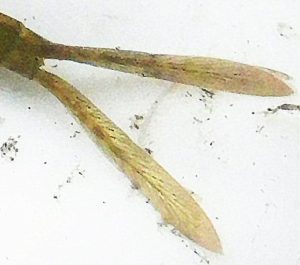
We also caught a newt or two. We carefully put all the minibeasts and interesting bits of pondweed back in the water.
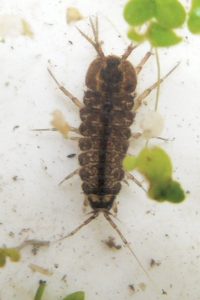
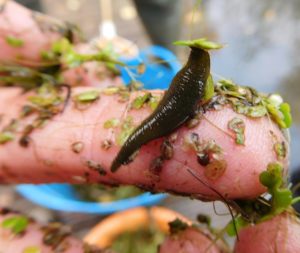
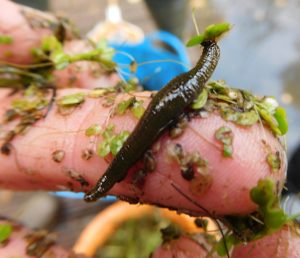
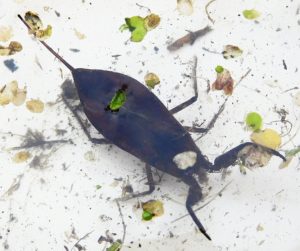
Herald moth brightens a day of clipping path edges
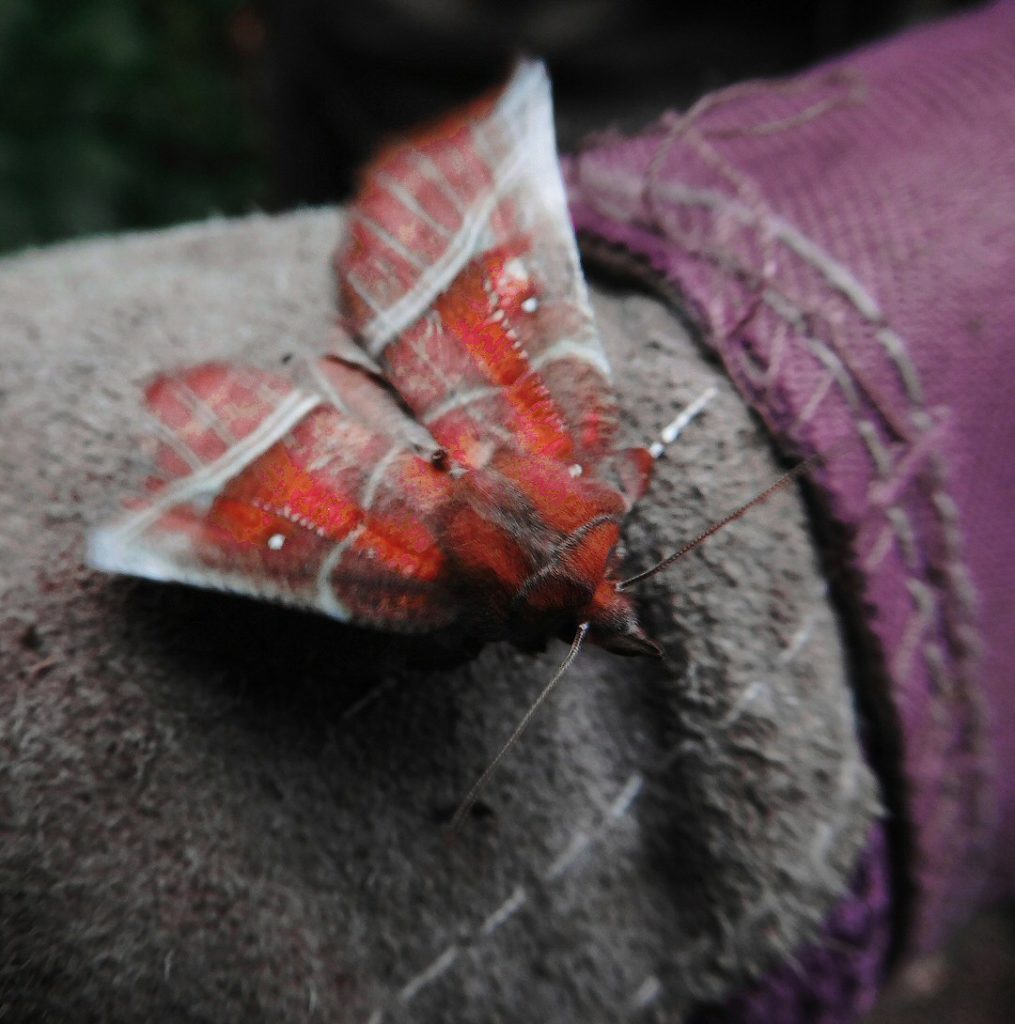
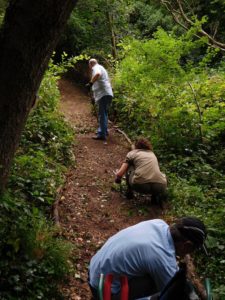
A busy day at the reserve
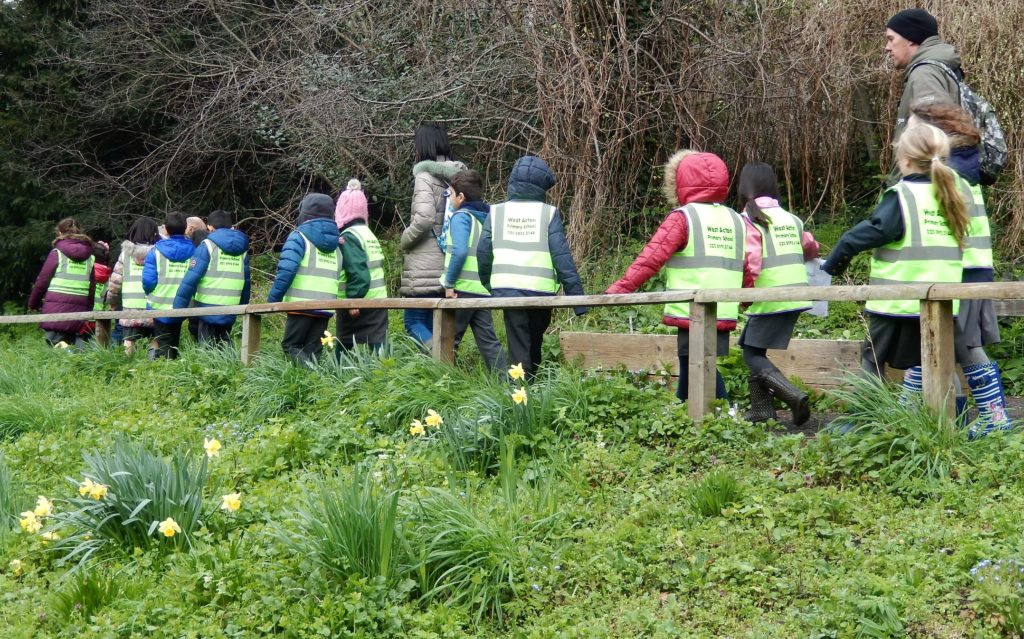
We set to work clearing the patch of meadow in front of the hut: it usually has a mix of wild flowers to welcome visitors, and that’s what we plan for it this year. We hoed out the weeds, raked out the stones, and sieved the earth to create a smooth seedbed.
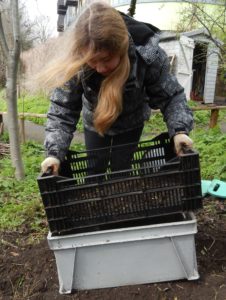
Being at the front of the reserve, we got to see everyone who came in, and there were plenty of visitors!
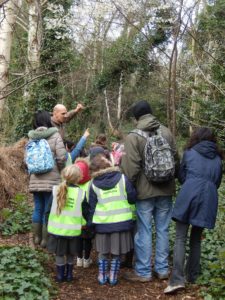
The reserve has 3 main purposes – to conserve nature, to educate children about nature, and to give the public a place to experience and enjoy nature. It’s a pleasure when all of these can be seen happening at once!
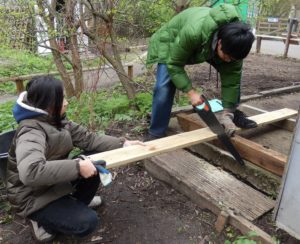
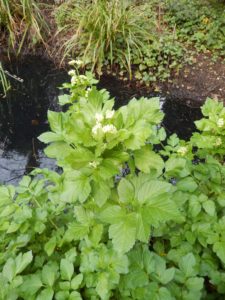
Spring is rushing along with no time to lose. Areas that were bare a moment ago are covered in fresh green leaves. The water plants seem to be especially quick: the Iris blades are feet high already.
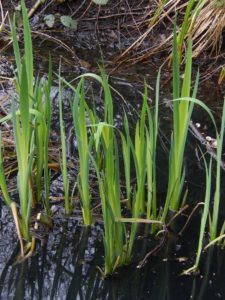
Planting a Hazel Hedge
It’s Spring! Crocuses! Corporate Workday!
Team cuts fallen Birch after Storm Doris
Debrambling and Distributor Heads all in a Day’s Work
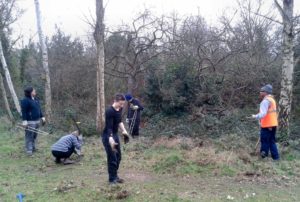
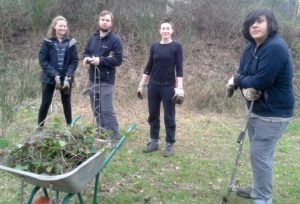
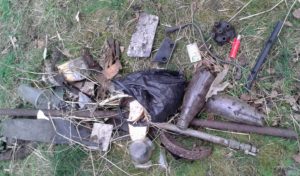
Distributor bits, wing mirror, electrical leads, yes, there used to be a garage over the fence. What with old rusty pipes, cigarette lighters, glass milk bottles (remember them?) and remains of workers’ lunches, it was quite a haul. We dug out some champion brambles and quite a few enormous nettles, too.
I also found some bits of Asbestos roofing, but we left them in situ as there was a Smooth Newt sheltering beneath them. All in all, it’s amazing what people will sling over a fence. We were happy to leave the North bank in a better state than it’s been in for many years.
Icy Wind from Europe – time for a good fire
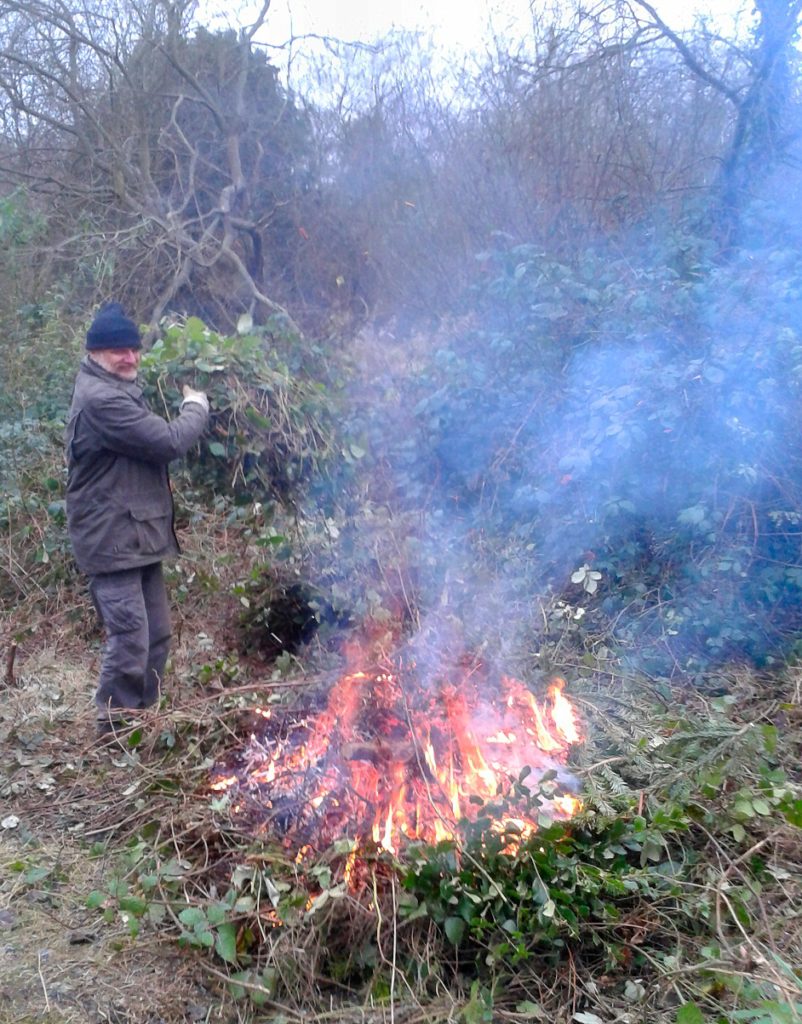
I nearly stayed home today, with the thermometer on -1 Celsius and a chilly wind off a frozen continent for the windchill factor, but I wrapped up warm with 2 fleeces and a bodywarmer under my jacket, and turned up at the hut. No other volunteers arrived, so Netty and I were the team. She said let’s make a fire: she had come equipped with potatoes to roast in case everybody felt like making a celebration out of it. We left them in the hut. I had a biscuit and a cup of tea and we bravely stepped outside.
I cut up a large Christmas tree with loppers: it was clearly an excellent specimen, as it still had all its leaves a month after Christmas, and smelt pleasantly resiny. It caught fire splendidly, and soon we had a fine blaze. It ate up quantities of brambles. The Holm Oaks that I’d cut also burnt well, if anything even better than the conifer; it seems to contain a lot of resin too.
I didn’t think about being cold at all while I worked, so the fire must indeed have been hot. I went home reeking of smoke.
Bramble root worthy of the Wurzels
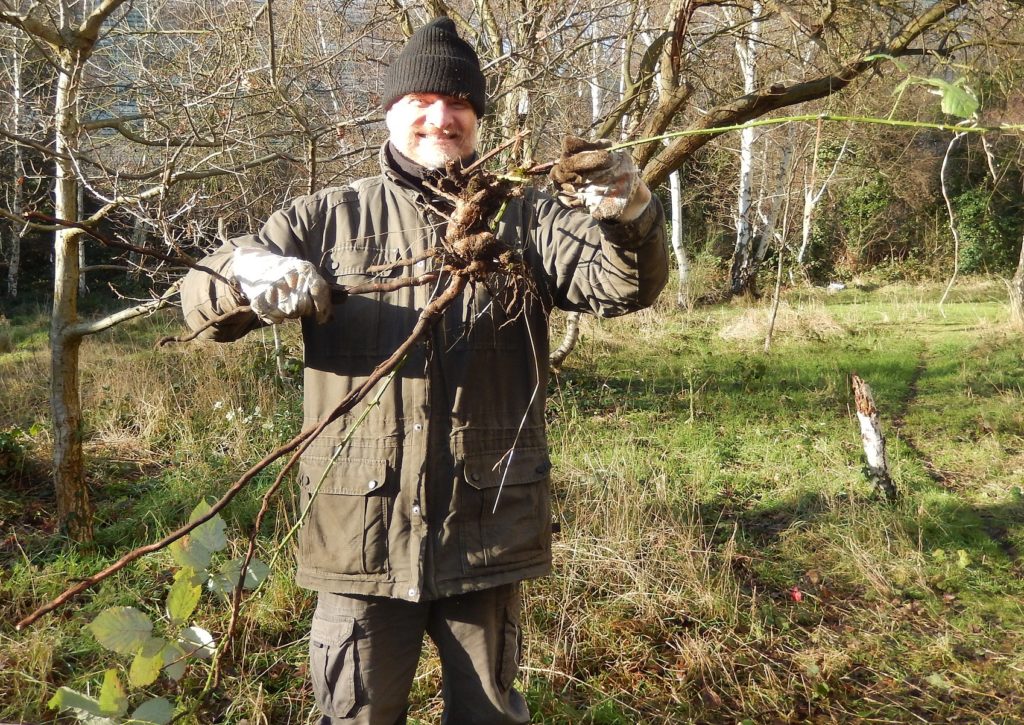
The Wurzels once sang about a giant marrow, to the immortal words “Oh what a beauty / I never saw one as big as that before”. I can’t imagine what they were referring to. Anyway, today in beautiful winter sunshine after days of rain, it was perfect weather for digging brambles out of the South-facing butterfly bank above the old railway track (which I’m standing on in the photo). The ground, too, was ideally soft and well-watered, so the roots came out with hardly any digging. Just before it was time to stop, my fork struck a large lump of wood, right under a small tuft of bramble stalks. I removed the loose earth above it, and made out to my pleasure half-a-dozen stalks that had been clipped off at ground level in earlier years as too difficult to dig out. Well, today was the day, and after really not very much wriggling with the fork, pulling and leaning on the fork handle, I triumphantly wrenched this grandfather-of-all-brambles from the ground, including to my surprise the yard-long taproot below my right hand. In short, a monster, if not a marrow.
The bank, by the way, is the reserve’s best place for Gatekeeper butterflies – we saw 35 there at once, on a stretch of the bank which was well weeded and grassy at the time. Now we have a far longer stretch all de-brambled at once, so perhaps we’ll have a bumper butterfly year, let’s hope so. And there are quite a few young Buddleias (“butterfly bushes”) self-seeded on the bank, a pleasantly “railway” feature, so the signs are good.

